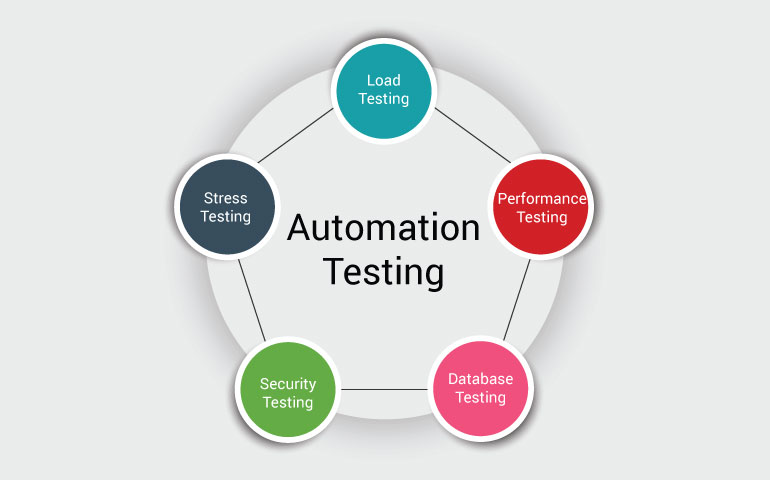Exactly How Automation Testing Revolutionizes Quality Assurance Processes
Exactly How Automation Testing Revolutionizes Quality Assurance Processes
Blog Article
From Manual to Automated Testing: A Comprehensive Guide to Transitioning Efficiently and Properly
In the realm of software application testing, the change from manual to automated processes has come to be a progressively vital transition for organizations seeking to enhance efficiency and accuracy in their testing methods. As modern technology remains to breakthrough, the demand for efficient and smooth computerized testing techniques has actually never been a lot more pressing. The journey from guidebook to automated testing is not without its obstacles, however when approached tactically and with a clear plan in mind, the advantages can be substantial - automation testing. In this extensive overview, we will certainly discover essential actions and considerations necessary for an effective change, from the initial choice of devices to the assimilation of automation into existing process. Remain tuned to reveal the insights that will certainly aid lead the way for a smoother and extra effective screening procedure.
Advantages of Automated Checking
Automated screening provides countless advantages, enhancing efficiency and precision in software growth procedures. One key benefit is the significant reduction in screening time. Automated examinations can be run all at once on multiple devices and running systems, considerably accelerating the screening stage contrasted to hands-on testing. This increased performance allows for faster comments on the high quality of the software, making it possible for developers to determine and resolve issues quickly.
Additionally, automated screening makes certain a greater level of precision in spotting flaws. Given that automated tests follow predefined scripts, human mistake is minimized, bring about even more trustworthy test outcomes. Consistency in screening is additionally enhanced, as automated tests implement the same actions exactly each time they are run. This consistency is important in ensuring that all capabilities of the software application are thoroughly checked, decreasing the chance of undetected pests slipping with to manufacturing.
Selecting the Right Devices

Firstly, evaluate your objectives and needs. Comprehend the range of your task, the modern technologies entailed, and the ability of your team. This evaluation will certainly aid you figure out the capabilities and features you need in your screening devices.
Second of all, take into consideration the compatibility of the devices with your existing procedures and systems. Seamless assimilation with your existing software application development lifecycle is necessary to guarantee a smooth change to automation.
In addition, assess the scalability and adaptability of the tools. As your screening requires develop, the tools need to have the ability to adapt and accommodate adjustments efficiently.
Finally, consider the support and area around the tools. When applying automated testing, robust support and an energetic user area can supply valuable sources and help. By carefully considering these aspects, you can select the right tools that align with your requirements and set the stage for a successful transition to automated screening.
Composing Efficient Test Manuscripts
When crafting test scripts, here are the findings it is vital to think about the certain requirements of the software being evaluated and make certain that the manuscripts resolve all crucial performances. Detailed and clear naming conventions for test scripts and examination instances can boost readability and maintainability. In addition, incorporating error handling systems within the test manuscripts can assist in recognizing and resolving concerns immediately.
Moreover, organizing examination scripts into modular elements can improve reusability and scalability, decreasing redundancy and enhancing effectiveness official site in test manuscript maintenance. Normal testimonials and updates to check manuscripts are important to maintain rate with developing software program requirements and functionalities. By following these principles, testers can develop robust and effective test manuscripts that contribute dramatically to the success of automated testing procedures.
Integrating Automation Into Workflows
Effective assimilation of automation tools into existing workflows boosts and streamlines procedures performance within software development cycles. When integrating automation right into workflows, it is critical to identify repetitive tasks that can be automated to conserve time and lower human error. By perfectly incorporating automated screening devices like Selenium or Appium into the software application growth lifecycle, groups can accomplish faster feedback on code changes, leading to quicker insect detection and resolution. This combination enables continual screening throughout the advancement procedure, making sure that any problems are identified early on, leading to higher software program top quality. In addition, automation can be utilized to cause tests immediately after each code commit, offering immediate validation and liberating testers to concentrate on more facility circumstances. Correct combination of automation tools calls for collaboration in between development, testing, and procedures teams to establish a unified workflow that maximizes effectiveness and performance in delivering top notch software program products.
Guaranteeing a Smooth Shift
Efficiently transitioning to automated screening includes precise planning and cautious execution to minimize disruptions and optimize effectiveness in the software program development procedure - automation testing. To make certain a smooth change, it is necessary to start by conducting a comprehensive analysis of the present screening procedures and identifying areas where automation can bring the most considerable advantages. Engaging with all stakeholders at an early stage in the procedure, consisting of developers, testers, and task managers, is essential for amassing support and buy-in for the automation initiative
Interaction is key during This Site this transition stage. Clear interaction of the objectives, benefits, and assumptions of automated screening aids to take care of any type of resistance or issues that may develop. In addition, offering adequate training and resources for team members to upskill in automation devices and methods is essential for making sure a successful transition.

Final Thought
Finally, transitioning from manual to automated testing provides countless benefits, including raised efficiency and dependability. By picking the proper devices, writing efficient test manuscripts, and integrating automation perfectly into operations, companies can guarantee a effective and smooth transition. It is necessary to accept automation as an important asset in software screening processes to improve overall top quality and productivity.
In the world of software testing, the shift from manual to automated processes has actually become a significantly crucial change for companies seeking to boost effectiveness and precision in their screening practices. Automated examinations can be run concurrently on several gadgets and operating systems, considerably speeding up the screening stage compared to hands-on screening. Uniformity in screening is likewise improved, as automated tests perform the very same steps precisely each time they are run.To make certain the successful application of selected testing tools, the creation of efficient test manuscripts plays a crucial function in verifying the functionality and efficiency of automated processes - automation testing. By following these principles, testers can develop robust and effective test scripts that add considerably to the success of automated testing processes
Report this page